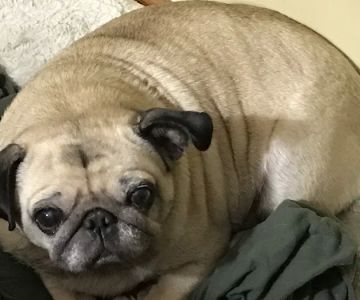How to Train Your Dog to Be Alone at Home
As a dog owner, one of the most important things you can teach your furry friend is how to be comfortable and confident when left alone at home. Whether it's for a few hours while you're at work or for a longer period of time, training your dog to be alone is essential for both their well-being and yours. It can be a challenging process, but with patience, consistency, and a few helpful tips, you can teach your dog to be independent and calm when you leave the house.
1. Understanding Separation Anxiety in Dogs
Before diving into the training process, it's important to understand what happens when a dog is left alone. Many dogs experience some form of separation anxiety when their owners leave the house. This anxiety can manifest in various ways, such as excessive barking, destructive behavior, drooling, or even accidents inside the house. It's essential to recognize that separation anxiety is a real issue for many dogs and requires a gradual and compassionate approach to help them cope.
For example, I remember when I first brought my dog, Max, home. He was incredibly attached to me, and whenever I left the room or the house, he would whine and cry. At first, I thought it was just because he was settling in, but as time passed, I realized that he had separation anxiety. It took some time, but with the right approach, Max learned to feel comfortable and safe when left alone.
2. Create a Safe and Comfortable Space
One of the first steps in training your dog to be alone is to create a designated space where they feel safe and secure. This could be a crate, a small room, or a dog-proofed area where your dog can relax while you're away. A comfortable space can reduce anxiety and provide your dog with a sense of security when you're not around.
When I started training Max, I decided to use a crate for him. I made sure it was big enough for him to stand up, turn around, and lie down comfortably. I placed his favorite blanket, some toys, and a chew bone inside to make it more inviting. Over time, Max began to associate the crate with positive experiences and felt comfortable resting there while I was out.
3. Gradual Desensitization: The Key to Success
One of the most effective techniques for training your dog to be alone is gradual desensitization. This method involves slowly increasing the amount of time your dog spends alone, starting with very short intervals and gradually building up to longer periods. The key is to ensure that the experience is positive and not overwhelming for your dog.
When I first started leaving Max alone, I began by stepping out the door for just a few seconds and then returning. I made sure to keep my departure and return low-key, avoiding any excitement or emotional reactions. This helped Max understand that my leaving was not a big deal. Over time, I increased the duration of my absences, and Max began to relax during the process.
4. Use Positive Reinforcement
Positive reinforcement is a powerful tool in any training process, and it works wonders when teaching your dog to be alone. Every time your dog remains calm and relaxed while you're away, reward them with treats, praise, or their favorite toy. This reinforces the idea that being alone is a positive experience and encourages good behavior.
For Max, I made sure to give him a small treat every time I returned home and found him calm and quiet. This helped him associate my absence with something positive. Over time, Max began to feel more at ease when I left the house, knowing that he would be rewarded for his calm behavior.
5. Avoid Over-Exaggerating Departures and Arrivals
Dogs are incredibly intuitive, and they can pick up on our emotions and behaviors. If we make a big fuss when we leave or return home, it can increase our dog's anxiety and create a cycle of stress. It's important to keep departures and arrivals low-key to help your dog understand that these moments are not something to be anxious about.
I made a conscious effort not to make a big deal when leaving or returning home. I would calmly say goodbye, leave without any fanfare, and return without over-enthusiastic greetings. Max gradually picked up on this behavior and started to become more relaxed during these moments.
6. Provide Mental and Physical Stimulation
Keeping your dog mentally and physically stimulated can help reduce anxiety and boredom when left alone. Before leaving the house, make sure your dog has had some exercise, whether it's a walk, a play session, or some interactive toys. A tired dog is less likely to engage in destructive behavior or become overly anxious.
Before I would leave for work, I made sure Max had a good walk or a play session in the backyard. I would also leave him with a puzzle toy or a treat-dispensing toy to keep his mind occupied while I was gone. This combination of exercise and mental stimulation helped keep Max relaxed and content during my absence.
7. Be Patient: It Takes Time
Training your dog to be alone is not an overnight process, and it requires a lot of patience. Each dog is different, and the time it takes for them to feel comfortable being alone will vary. It's important to be patient and consistent with your training efforts and to celebrate small victories along the way.
With Max, there were days when he would still cry when I left, but over time, the sessions became shorter, and his anxiety reduced. The key is consistency—by sticking to the gradual desensitization process, Max eventually learned that being alone wasn’t something to fear.
8. When to Seek Professional Help
While most dogs can learn to be alone with proper training, some may require additional help. If your dog’s separation anxiety is severe or they exhibit extreme behaviors such as constant barking, destructive chewing, or self-harming, it may be time to consult with a professional dog trainer or veterinarian. They can help you develop a more tailored plan and may recommend additional treatments, such as behavioral therapy or medication, to help your dog cope.
If you're struggling with your dog’s separation anxiety and you're not sure how to proceed, reaching out to a professional can make a big difference. A certified dog trainer or animal behaviorist can assess your dog's behavior and provide the right guidance to help them feel more comfortable when left alone.
Conclusion
Training your dog to be alone at home is an essential skill for both you and your dog. With patience, consistency, and the right approach, your dog can learn to feel safe and secure when you're not around. Start with gradual desensitization, use positive reinforcement, and provide your dog with the comfort they need. With time, your dog will be more independent and confident when you're away, making your life—and theirs—a little easier.











